Rescue™ is approved for use against some of the world’s most dangerous pathogens including SARS-CoV-2, the virus that causes COVID-19.
Trusted in times of crisis, Rescue™, formulated with Accelerated Hydrogen Peroxide® is approved for use against SARS-CoV-2, the virus that causes COVID-19, when used in accordance with the directions for use against Poliovirus type 1.
Directions for use: For Rescue Concentrate use a 1:64 dilution and contact time of 5 minutes. For Rescue™ RTU and Wipes, use a contact time of 1 minute.
In cases of emerging viral pathogens like SARS-CoV-2, the virus that causes COVID-19, when there is no test that can be conducted to validate the efficacy of a disinfectant, the EPA utilizes Emerging Viral Pathogen Guidance to determine the expected efficacy of a disinfectant against an emerging virus. This guidance, used previously during the 2003 SARS epidemic, mandates that for disinfectant products to be approved, they must be an EPA registered Hospital or Broad-Spectrum disinfectant and have proven efficacy against two small, non-enveloped viruses, such as Poliovirus and Parvovirus.
Please note that Rescue™ is an intermediate-level surface disinfectant designed and intended for use on hard, non-porous surfaces. As the manufacturer, we cannot recommend it for direct application on pet fur or human skin.
In general, we believe effective clinic management would include a container of Rescue™ Wipes in every exam room, and one on the front counter of the clinic. We encourage you to make Rescue™ Wipes, Ready-to-Use Liquid and Concentrate a standard part of your daily call regimen.
Transmission
COVID-19 appears to spread from close person to person contact, with some research indicating that it can be transmitted via the air. It may also spread by touching contaminated objects or services and then touching your mouth, nose or eyes.
Prevention
Like the common cold and the flu, the best ways to prevent infection include:
- Using soap and water for at least 20 seconds to wash your hands and doing so frequently. Alcohol-based hand signed sanitizer with at least 60% alcohol may also be used.
- Use of a face mask
- Avoiding contact with eyes nose and mouth with your hands
- Avoiding close contact with people who are sick or have been possibly exposed
- Staying home when ill or experiencing symptoms
- Exercising good hygiene by covering your mouth when coughing or using a tissue when sneezing
- Cleaning and disinfecting hard objects and solid surfaces
You may also find these resources useful:
- Virox Technologies Inc. Rescue's efficacy against SARS-CoV-2
- AHP - A Proven History of Preventing Transmission of Coronaviruses
- World Health Organization: Coronavirus disease (COVID-19) outbreak
- Centers for Disease and Control Prevention: Coronavirus Disease 2019 (COVID-19) in the US
- Novel Coronavirus (COVID-19) - Fighting Products
- Cleaning and Disinfection Protocol for Cages and Kennels
- Cleaning and Disinfection Protocol for Exam Rooms
- Keep It Clean Brochure- Infection Control and Biosecurity in Veterinary Medicine
- Rescue™ Disinfectants and COVID-19
Video: How to use Rescue Concentrate
Video: How to use Rescue Ready to Use Liquid
Video: How to use Rescue Wipes
Video: Fomite Transfer vs. Aerosolization
